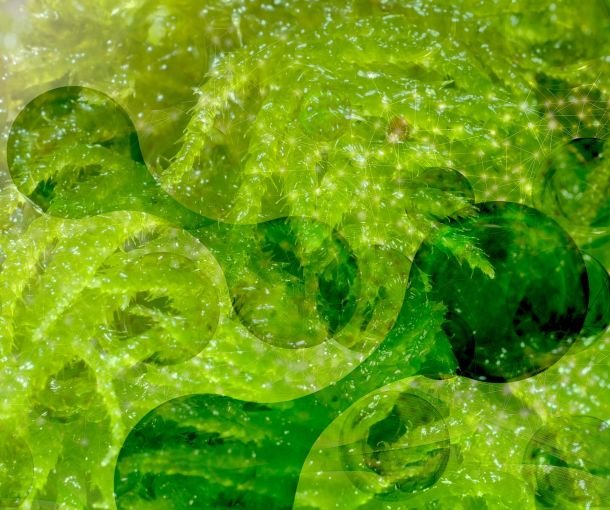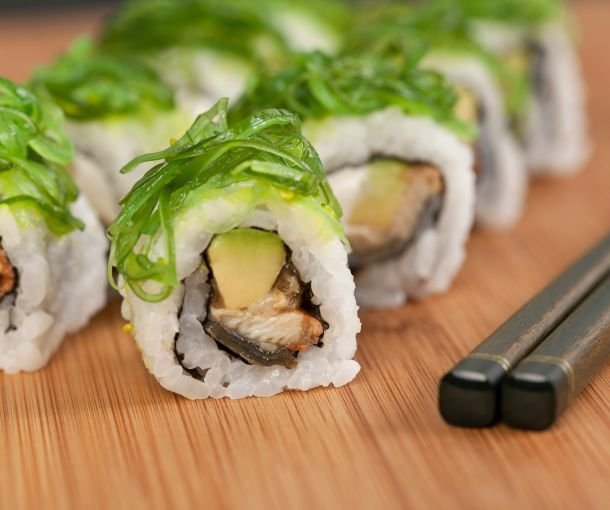Seaweed Biopolymers: A Deep Dive into Biopolymers in Sustainable Cosmetics

Introduction
In an era when sustainability has become the North Star guiding various industries, the cosmetics sector finds itself at a crossroads. Consumers, increasingly environmentally conscious, are demanding products that not only enhance their beauty but also align with their values. In this shifting landscape, an unassuming hero has emerged from beneath the waves – seaweed macroalgae. Seaweed biopolymers, harnessed from these oceanic wonders, have taken center stage as a sustainable alternative to traditional cosmetic ingredients. In this expansive blog article, we embark on a deep exploration of the myriad varieties of biopolymers that seaweed macroalgae can yield, and we delve into the intricate process of bioengineering each of them at scale. The ultimate goal? To supply the cosmetics industry with a trove of sustainable biomaterials, revolutionizing how we approach beauty and skincare.
Cosmetic formulations have long relied on a vast array of ingredients, some of which raise environmental concerns. As the global population awakens to the fragility of our planet, there is a growing imperative to find eco-friendly alternatives. Seaweed biopolymers, derived from diverse species of macroalgae, have stepped into the limelight as a solution that harmonizes the pursuit of beauty with environmental responsibility.
The world of seaweed biopolymers is rich and diverse. Alginate biopolymers, sourced primarily from brown seaweeds, possess unique gel-forming properties. They play a pivotal role in the creation of luxurious creams, masks, and exfoliants, providing a natural, skin-friendly texture that consumers adore.
Carrageenan biopolymers, extracted from red seaweeds, offer unmatched thickening and stabilizing prowess. These biopolymers find their place in a variety of cosmetics, improving product stability, texture, and moisture retention. Lotions, creams, and shampoos all benefit from the magic of carrageenan.
Agar biopolymers, also sourced from red seaweeds, bring their exceptional gelling and emulsifying abilities to the cosmetic world. They help create stable emulsions, gels, and foams, enhancing the sensory experience of products such as hair styling gels, moisturizers, and facial masks.
Fucoidan biopolymers, complex sulfated polysaccharides found in brown seaweeds, are currently in the spotlight for their potential anti-aging and skin-rejuvenating properties. Cosmetic formulations are exploring the integration of fucoidan to develop anti-wrinkle creams, serums, and masks that promise not only beauty but also the care of our precious oceans.
The journey from seaweed macroalgae to cosmetic biopolymers involves a symphony of processes, from cultivation and harvesting to extraction, quality control, and regulatory compliance. Scaling up seaweed cultivation is the first critical step in ensuring a consistent supply of raw materials. Large-scale seaweed farms, guided by sustainable practices, are emerging as a solution.
The extraction and processing of biopolymers demand innovative techniques that are efficient, environmentally friendly, and economically viable. Enzyme-assisted extraction and cutting-edge mechanical processing methods are being explored to reduce processing time and increase yield. Quality control and standardization are paramount in meeting the exacting standards of the cosmetics industry. Rigorous quality control protocols, supported by sophisticated analytical techniques like spectroscopy and chromatography, ensure that the biopolymers meet industry requirements.
However, navigating the complexities of regulatory compliance is not without its challenges. Developing standardized regulations and quality standards for seaweed biopolymers demands collaborative efforts between the cosmetics industry, regulatory bodies, and seaweed biopolymer producers.
As consumers increasingly seek cosmetic products that reflect their environmental consciousness, seaweed biopolymers offer an alluring promise. Beyond their inherent sustainability, seaweed cultivation requires minimal freshwater, arable land, and synthetic fertilizers. It avoids the ethical dilemma of competing with food crops for resources and boasts a low environmental footprint. Additionally, seaweed farming contributes to ocean health by mitigating ocean acidification and creating habitats for marine life.
The world of seaweed biopolymers represents a compelling avenue for the cosmetics industry to embrace sustainability without compromising on product efficacy. Alginate, carrageenan, agar, and fucoidan biopolymers offer a diverse palette of properties and applications, from texturizing agents to age-defying ingredients. By harnessing the potential of seaweed macroalgae, the cosmetics industry can embark on a transformative journey toward a greener, more sustainable, and ultimately more beautiful future.
Varieties of Seaweed Biopolymers
Alginate Biopolymers: Alginate is a versatile biopolymer extracted from brown seaweeds. It forms a gel-like substance when combined with calcium ions, making it valuable for various cosmetic applications. Alginate is used as a thickener, gelling agent, and moisture-retaining ingredient in products like creams, masks, and exfoliants.
Carrageenan Biopolymers: Carrageenan is derived from red seaweeds and is renowned for its thickening and stabilizing properties. In cosmetics, it’s used to improve product texture, stability, and moisture retention. Carrageenan is a common ingredient in skin creams, lotions, and shampoos.
Agar Biopolymers: Agar, obtained from red seaweeds, has excellent gelling and emulsifying properties. It is used in cosmetics to create stable emulsions, gels, and foams. Agar-based ingredients find their way into products like hair styling gels, moisturizers, and facial masks.
Fucoidan Biopolymers: Fucoidan is a complex sulfated polysaccharide found in brown seaweeds. It has garnered attention for its potential anti-aging and skin-rejuvenating properties. Cosmetic formulations are exploring fucoidan for use in anti-wrinkle creams, serums, and masks.
Bioengineering at Scale
Cultivation and Harvesting: Scaling up seaweed cultivation is a critical first step. To ensure a consistent supply of raw materials, large-scale seaweed farms can be established using sustainable practices. Innovations in seaweed farming technology are streamlining cultivation.
Extraction and Processing: Developing efficient extraction methods is essential for large-scale production. Innovations in extraction technologies, such as enzyme-assisted extraction, reduce processing time and increase yield.
Quality Control and Standardization: Ensuring the consistency and quality of seaweed biopolymers is vital. Robust quality control protocols, including analytical techniques like spectroscopy and chromatography, are employed to meet industry standards.
Regulatory Compliance: Meeting regulatory requirements for cosmetic ingredients is a complex endeavor. Collaborative efforts between the cosmetics industry, regulatory bodies, and seaweed biopolymer producers are essential for compliance.
Sustainability and Eco-Friendliness
Seaweed biopolymers offer inherent sustainability advantages. Seaweed cultivation requires minimal freshwater, arable land, and synthetic fertilizers. It doesn’t compete with food crops and has a low environmental footprint. Moreover, seaweed farming can help mitigate ocean acidification and provide habitats for marine life.
Conclusion
Seaweed biopolymers represent a remarkable opportunity for the cosmetics industry to transition towards sustainability. Alginate, carrageenan, agar, and fucoidan biopolymers offer diverse properties and applications, from gelling agents to anti-aging ingredients. Through bioengineering at scale, including cultivation, extraction, quality control, and regulatory compliance, these biomaterials can be supplied to the cosmetics industry in an environmentally responsible manner.
As consumers increasingly seek eco-friendly and sustainable cosmetic products, seaweed biopolymers offer a compelling solution. By harnessing the potential of seaweed macroalgae, the cosmetics industry can simultaneously enhance product efficacy and contribute to a greener, more sustainable future.
References:
Sabah, E., & Cam, M. (2020). Biodegradable Agar-Based Composite Films Reinforced with Olive Leaf Extract-Loaded Alginate Microcapsules for Wound Dressing Applications. Materials, 13(13), 2957.
Song, Y. R., Kim, H. J., & Kim, I. H. (2020). Marine Cosmeceutical Properties of Fucoidan: A Review on Recent Developments. Cosmetics, 7(1), 6.
Pawlik-Skowrońska, B., Lemieszek, M. K., & Pilżys, T. (2021). Seaweed Extracts as a Source of Biologically Active Substances in Cosmetology and Dermatology: A Review. Cosmetics, 8(4), 79.
Dufossé, L., & Galaup, P. (2019). Red Seaweed (Rhodophyta) Biotechnology. In Marine Algae Extracts (pp. 217-229). CRC Press.


